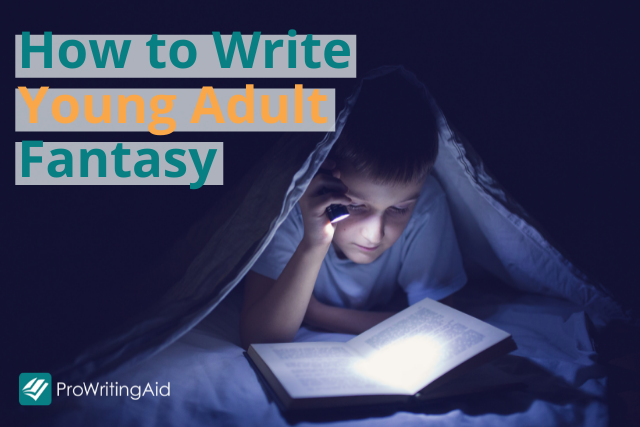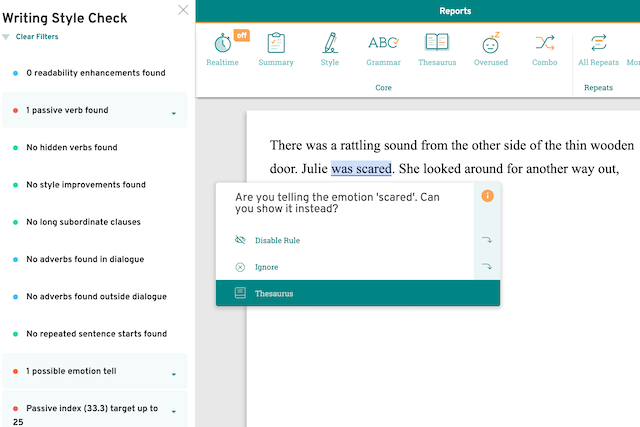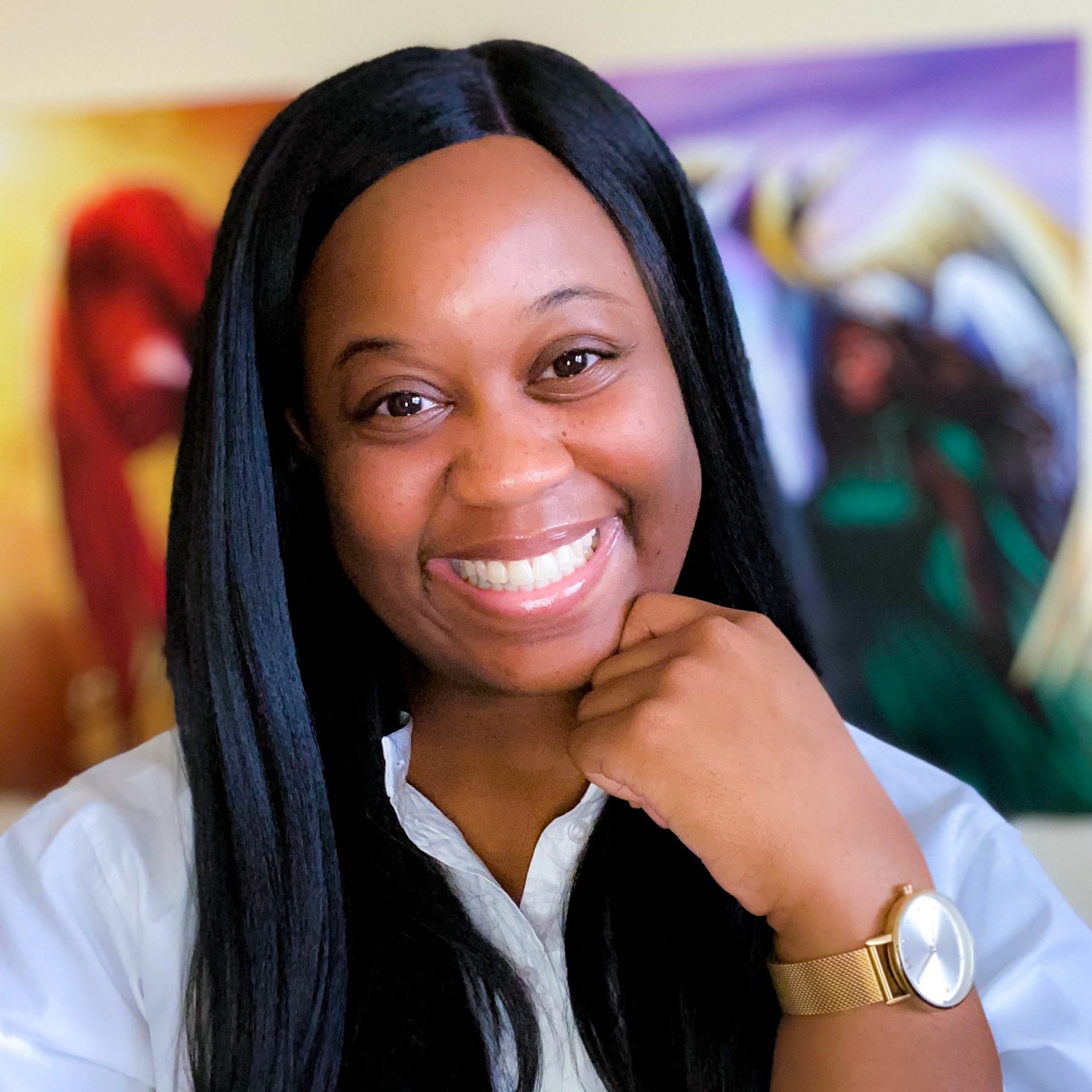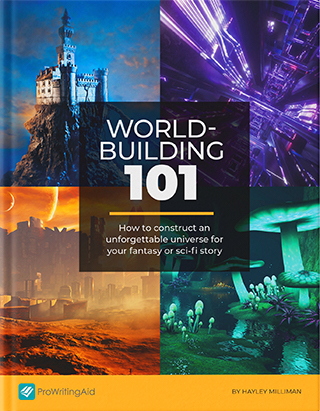
We know that lots of you in the ProWritingAid community are writing YA fantasy. The best YA novels are the ones you can’t stop reading—but how can you make sure your readers can’t put your book down? We asked YA fantasy author Stephanie BwaBwa to share her tips on crafting novels that keep your readers turning pages long into the night.
Over to Stephanie!
- 8 Steps Towards Page-Turning YA Fantasy
- 1. Craft Complex, Relatable, 3-Dimensional Characters
- 2. Craft a Villain That’s Hard to Hate and Love
- 3. Build Romance Into the Subplot
- 4. Always Show Over Tell
- 5. Use the Five Senses Instead of Deferring to Explaining
- 6. Good Dialogue Matters
- 7. Craft an Immersive Fantasy World
- 8. Build In Plot Twists Readers Never See Coming
- Final Thoughts
8 Steps Towards Page-Turning YA Fantasy
Writing a page-turning novel, especially one in the YA fantasy genre, is easier than you might think. The beauty of the genre lies in the consistency of its elements. The patterns found in each book that always lead to satisfied readers.
Adding these elements to your story will compel readers to binge your novel from the first page till the very end.
You may think to yourself, you love binge reading a YA fantasy novel, but how can you write your own?
Having studied YA fantasy as both a reader and writer for over eight years, it doesn’t take long to catch the patterns that make up the YA fantasy novels that are overwhelmingly beloved. And with good reason.
The secret to writing a novel readers will love is a matter of uncovering the patterns of the genre laid out in the most beloved books, extracting those elements, and adding them to your own novel.
1. Craft Complex, Relatable, 3-Dimensional Characters
The term “3-dimensional” gets thrown around a ton in regards to character development. However, though some have turned it into somewhat of a cliché, there’s no better way to describe the kind of characters your novels need.
Writing 3-dimensional characters means writing characters with layers. Many layers. You’ll find in most YA fantasy, the characters tend to be gray, including the protagonists.
Why? Because a perfect Mary Sue is unrelatable. But the flawed, 3-dimensional character is highly relatable.
These are characters who make the right decisions for the wrong reasons. They take on Messiah Complexes that end up doing more damage than good. They choose to bear the weight of the world, and end up breaking beneath it.
Crafting complex, 3-dimensional characters is far simpler than it may seem. Best practices of approaching the development of the characters include:
- Learning about the character on a surface level
- Understanding how the character thinks through personal journal prompts
- Journal prompts from the POV (point of view) of close-related characters such as parents, siblings, or a master
Such information about a character helps you to craft them in ways YA readers can connect with. Sometimes they’ll make the right decision, and other times they won’t. More often than not, when they don’t, there are devastating consequences.
2. Craft a Villain That’s Hard to Hate and Love
A good villain isn’t an antagonist that takes bad actions for the sake of being evil. A good villain does bad things for the right reason. Read that again.
Good villains want the same thing everyone else wants. The only difference is their decisions and actions come at the expense of others. And more often than not, they have no remorse.
They see the world in one way, and refuse to budge because they believe it’s right, and their version of justice is righteous.
Think of President Snow from The Hunger Games.
It wasn’t the fact that he so easily caused genocide, obliterating Districts, and wiping down their population to zero.
What made President Snow so evil, and such a powerful villain, was the fact that he did so because he believed the world could only have order with extreme control over the unfortunate and segregation among the Districts. He believed the hierarchy of Panem was needed.
It fueled his own agenda, but also mirrored what he thought appropriate to create a world in his mind that made sense. Never mind the millions who lived in abject poverty and hated their lives. Let alone the games.
Snow believed there was a certain way to life, and controlling the way the Districts lived upheld his views.
Thanos from the Marvel Cinematic Universe is another brilliant villain who had the same exact views as President Snow. And just like President Snow, Thanos was unapologetic, and unafraid to act on his beliefs. A decision that served his own ideology at the expense of half the universe.
Villains like these are hard to not hate while also being hard to hate. Why?
Because the rationale of good villains makes sense.
For example, let’s go back to Thanos. His ideology was: the universe is suffering because there’s too many mouths to feed, and not enough resources. However, if you kill off half of the universe, you’ll have more than enough resources for the citizens of the worlds left behind.
This is cruel beyond degree… but it makes total sense. Leave the population as is and the worlds will reach extinction because resources will run out. Kill off half the population, and civilization continues.
Thanos thought himself the righteous Messiah to make that choice for everyone else, even at the cost of those he loved most.
Good villains aren’t whack jobs.
They’re brilliant, cunning, ever-calculating shakers in the world you’re creating. The more a reader can see themselves in the villain, even if they don’t want to, the more you know you’ve nailed the villain.

3. Build Romance Into the Subplot
YA fantasy just isn’t YA fantasy without the romance subplot. More often than not, the romance is so integral, it can almost be the main driver of the plot for the story.
YA fantasy readers read the novels greatly due to the romance. They love going on the journey of the main characters falling in love, and becoming soul mates.
A few romance tropes of YA fantasy are:
- Enemies to lovers (my personal favorite)
- Best friends to lovers
- Strangers to lovers
- Love at first sight
Funny as it may seem, YA fantasy readers obsess over the romance with the following elements:
- The brooding, sexy male with dark hair and mysterious eyes
- Underdog girl seeming to be plain yet chosen by all
- Characters with baggage that only the other understands
- Characters who are constantly fighting, yet are in love, but keep trying to kill each other
These are just a few traits, but the above alone makes up most of the YA fantasy you read. They’re popular tropes, so beloved, it’s almost sacrilege to not include at least one or two into your novel.
Readers will binge read a novel simply to know how the characters wind up as a couple. More often than not, they rage if they shipped two characters and they don’t end up together.
ahem Harry Potter and Hermione Granger ahem
Give readers what they want by overwhelming their desires with romance that will curl their toes, raise their eyebrows, and keep them flipping the page.
4. Always Show Over Tell
One of the main drivers of young adult fantasy, is showing what’s happening. The main reason for this, is because young adults like to feel as if they’re in the pages themselves.
Use Body Language Liberally
The reactions of the body are great indicators of what’s being said, or taking place, in any given situation.
Reflect back on an argument you’ve witnessed as a fly on the wall. The bodily response of a person alone can either escalate or de-escalate rising tension.
It’s the same for YA fantasy. Body language amplifies the dramatics of the scene, heightening reader engagement, and the lack thereof, will dampen it.
It’s almost like slipping behind the curtains in a theatre, and watching the drama of the dancers unfold, popcorn in hand.
Steer away from telling readers what’s happening, whether between characters, or in the setting.
For example:
Jelessa threw a dagger at Usef. Usef roared, and looked as if he was in pain… or very angry. His body quaked.
She prepared herself for his reaction, reaching to grab another dagger. She didn’t care what he’d do. She was strong enough to handle him. Even alone.
Then, his head cocked up. Gods, he was in such a rage.
“You’ll pay for this, girl.”
Jelessa looked Usef in the eyes and willed him to see her strength.
“Not if I kill you first.”
Take space, and allow the words you pen to show what’s unfolding with vivid imagery. Keep in mind the example above, and compare it to the one below. Allow body language to reflect the tension in the scene.
For example:
The dagger flew out of Jelessa’s hand, pinning into the corded muscle of Usef’s thigh. A roar rocked his chest, his eyes widening, as those broad shoulders bent down, a shudder dancing along his frame.
Jelessa’s eyes caught the flex of his hands. The thickening tendrils surfacing in his neck. Her own fingers had already curved around her second dagger, her eyes watching him with cold, calculating precision.
Usef cocked his head back, and Jelessa stilled.
His nostrils flared, an ugly snarl curling his upper lip. “You’ll pay for this, girl.”
Her chin jutted out, defiance lengthening her spine. “Not if I kill you first.”
Makes you want to know what happens next, doesn’t it?
Body language allows you to shift a reader from reading to experiencing, the subtle change needed to keep them flipping the page.
One sign that you’re telling instead of showing what your characters are feeling is your use of emotional tells. These are little tags like was scared and felt happy. We all experience emotions uniquely, and your characters are no different. When you tell your reader how a character feels, you miss an opportunity to explore the way they express or experience that emotion.
ProWritingAid will highlight all of the emotional tells in your writing so you can change them out for more engaging alternatives like the second example above.

To explore your emotional tells, run the Style Report in ProWritingAid.
5. Use the Five Senses Instead of Deferring to Explaining
It can be easy to go into explanation mode. How the character reacted and why. What the character was thinking and how the words made it out of their mouths.
This trail of writing tip-toes into all elements of Story. Explaining what the reader should be seeing versus using the five senses to get them to experience the world themselves.
This causes the writer to tell the readers something like:
...the Fae were from the forest, and looked like the gods.
Rather than getting the reader to:
...smell the scent of lemon and pine that emanates off the broad chest of the chiseled soldier with golden eyes burning like a thousand suns and the rough, calloused hands that form wood into weapons.
YA fantasy readers don’t want to be told about the moody, troubled old soul that seems to want a change in their life.
They want to see his barriers fall, and feel his soul break, as inner rage wrestles with his dangerous desires, and all-consuming need for love, and freedom, and release.
6. Good Dialogue Matters
A heartbeat of YA fantasy lies in the dialogue. Dialogue helps break up long scenes, especially if it’s a semi-info dump, or a moment for detailed, relevant world-building.
YA fantasy readers expect dialogue that leaves them with takeaways, or gives them further insight into what’s happening in the characters’ world.
Also, YA fantasy readers expect to laugh. They want to listen in as the characters have conversations that leave them snorting under their covers in the middle of the night.
If you read much YA fantasy, you’ll notice there’s often a good amount of banter involved. And the banter is usually filled with great swaths of humor.
This is important. It makes room for readers to grow further attached to the character while priming them to learn something more.
Dialogue serves to fulfill several aspects:
- It allows readers to learn more about the character speaking
- It allows readers to learn about important facts pertaining to the world
- It reveals the character’s world view and hints if they’ll change
When crafting dialogue, be wary of writing random sentences to force a chuckle or a tear. Written dialogue has to be purposeful.
Good dialogue:
- Furthers the plot of the story
- Stirs up conflict and stretches tension
- Can be used as a another story beat to trigger motion along the rising action of the story
When reading over dialogue you’ve written, pay attention to purpose. Does the dialogue reveal anything? Does it cause the character to change in any way? Does it further solidify a relationship, or strain it? Is it relevant?
If you can delete the dialogue written, without hurting the overall scene, get rid of it. If you find that the scene simply can’t move on, or carry the weight needed without the dialogue, keep it in your scene.
7. Craft an Immersive Fantasy World
One of the greatest building blocks of an amazing YA fantasy that readers adore and binge, is the world-building.
The world complements the characters and serves to heighten their challenges and triumphs. Building such a world is a feat on it’s own, however, here are some the main elements to consider:
- The magic system
- Geography of the land
- Government
- Money
- Education
- Culture
- Fantasy creatures and monsters
- Festivals and holidays
- Legends and myths
- Roles and ethics
This isn’t an exhaustive list, but it will get you going with crafting an amazing world. And, spoiler alert: most of what you develop won’t end up in the novel.
However, knowing this kind of information about the world puts you at a great advantage because it will be that much easier to immerse your readers into the world.
This kind of world-building is what causes readers to be lost for hours in a novel they love. It goes beyond describing the color of bedroom curtains. Or showing where the curved street leads.
Detailed world-building is the platform of immersive fantasy. The reader no longer feels like they’re reading, but rather as if they’re living in the world themselves.
You can’t have page-turning YA fantasy without complex, relatable characters. I daresay, you also can’t have it without magical, immersive, fantasy worlds.

When getting started with in-depth world-building, break it down into two parts to avoid overwhelm:
- Micro world-building
- Macro world-building
Micro world-building crafts the world from the inside out. It takes into account everything involved in the characters’ normal world, and what they experience in their day to day lives.
Macro world-building crafts the world from the outside in. This approach takes into account the past, and what led up to the present. It also looks into the universe, and other worlds, and how the events that take place elsewhere forge the normal world of the character.
Creating immersive fantasy worlds is a rabbit-hole authors can get lost in until the end of time.
Pro-Tip: Only develop what is relevant in the novels you will write for your world.
It matters not if the berries are purple and filled with heart-choking poison. You don’t need to list every fruit tree, and describe every building with precise details, and know where each river from old legends are. However, locations that are relevant to the plot should be developed at great length.
8. Build In Plot Twists Readers Never See Coming
YA fantasy readers are smarter than you think they are. Their minds are sharp, and they’re constantly reading between the lines to pick apart the truth of what’s happening to see if they can guess where you’re going.
Never let them figure it out. Never let them guess right. The moment you do? Your book is done.
There’s no cause for a reader to continue if they’ve already pegged the great finale halfway through the novel.
As a writer of YA fantasy, it’s your job to master misdirection. And use it without reservation.
Take readers down trails they assume will go one way, without them ever considering the other possibility. The actual Easter egg that’ll blow up in their faces when they read the last few pages.
YA readers obsess over a good ending. And plot twists secure such an earned surprise.
Your plot twists should contain any of the following:
- A revelation that is new yet weaves through the fabric of the story intricately
- A shocking detail about an obvious character with a greater secret than readers realized
- Explanation towards the book’s end about details learned in the beginning
- A new meaning for something that seemed set in stone
Plot twists solely serve to set up the end of a novel. The misdirection of plot twists allows writers to build up to the climax and deliver a shocking, yet deliciously satisfying end.
Plot twists are meant to be jaw hangers. Gut punchers. Mind blowers.
Not to mention, while they serve the end of the book, they also are the backbone of page-turning novels. A good plot twist triggers new questions, gives a new revelation, and gets the minds of readers running.
Readers work very hard, flipping page after page, to earn that end. Give them what they’re hungry for.
Final Thoughts
These are some of my best tips for you to write your own page-turning YA fantasy novel. If you will give yourself grace to not rush the writing process, if you’ll include these elements in your novel, I’m positive your readers won’t be able to put your books down.
Naturally, this article could only contain so much information. If you’re apt to dive deeper and really write your best YA fantasy novel, be sure to join The Scripters Collective community.


